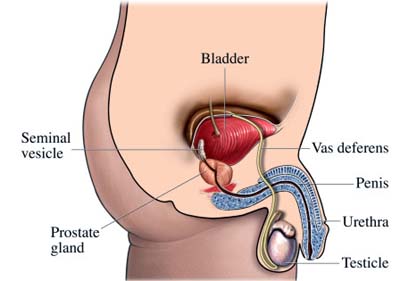Oct 17, 2025
Oct 17, 2025
Definition
Benign prostatic hypertrophy (BPH) is swelling of Prostate gland.
 The prostate is a walnut sized gland that is only present in men. It is located just below the bladder and top of the penis. This gland surrounds the urethra (the tube through which urine flows from the bladder and out through the penis).
The prostate is a walnut sized gland that is only present in men. It is located just below the bladder and top of the penis. This gland surrounds the urethra (the tube through which urine flows from the bladder and out through the penis).
It is a very astonishing fact to know that the condition BPH has been explained in Ayurveda long back. The anatomical position of prostate gland, symptoms of BPH and its remedies are explained by Acharya Sushruta.
The anatomical position of prostate gland is described in Ayurvedic classics as follows. In Yogaratnakara it has been described as
"Naabheradhasthaatsanjaatha Sanchaari Yadi Vaachalaha
Ashteelaavad Ghano Granthiroodhwar Maayata Unnataha"
Which means - Below umbilicus (NAABHI), there is a hard gland which is little bit bulged and changes its place some times and some times stays stationary. This gland is like 'Ashteela' (A small stone used to sharpen swords). This gland when affected by vitiated vata causes a disease called vataashteela (or benign prostate hypertrophy).
Sushruta explains the structure, anatomical position of prostate gland and symptoms of BPH as follows.
"Shacranmaargasya Basheshcha Vaayurantaramaashritaha
Ashteelaavadghanam Granthimmoordhvamaayata Munnatam"
Which means - the place between rectum and bladder is occupied by vitiated vata it affects the easy flow of urine, stools and semen by enlarging the gland "Ashteela".
The prostate gland enlarges in all men as age advances. BPH is very common and affects one third of men who are over 50. A person suffering from BPH does not have the increased risk of prostate cancer.
Functions of Prostate Gland
One of the main functions of the prostate is to produce a fluid, which contribute to the liquid portion of semen and this liquid allows the sperm to move freely.
The gland is divided into peripheral, transitional and central zone. The overgrowth takes place in central zone which leads to BPH.
Effects of BPH Prostate gland surrounds urethra. When prostate gland enlarges, it constricts the urethra reducing the urine flow. The emptying of bladder becomes very difficult because of this.
Causes of BPH
According to present medical concepts the actual cause of prostate enlargement is unknown.
But the causes of BPH are very well explained In ayurveda which is based on tridosha theory. The causes of vataashteela or BPH are explained as follows.
Causes for Vataashteela According to Dosha Theory
Vataashteela is caused by vitiated vayu and apaana vayu ( a subcategory of Vayu). (Apaana Vayu is located in two testicles, urinary bladder, phallus, umbilicus, thighs, groins, anus and colon. Functions of apana vaayu are Ejaculation of semen, voiding of urine, stools, elimination of menstrual blood and expulsion of fetus.)
The vitiation of vayu and apaana vayu is caused by
Symptoms of BPH
Symptoms of vatashteela are described as follows.
"Vinmutraanila Sangascha Tannadmaanamcha Jaayate
Vedanaa Cha Paraa Bastou Vaatashteeleti Taam Viduhu"
The vitiated ashteela gland when enlarged is called as 'vatashteela'. This enlarged gland causes
When the above mentioned symptoms are noticed then one should seek proper medical advice.
Diagnosis
A digital rectal examination will be performed to examine the size of prostate by inserting a finger into the rectum. A distended bladder can be felt per abdomen. Ultra sound examination will be done to determine the amount of urine left in the bladder after urination. Routine urine test will be done to rule out infections.
A prostate gland tissue may be collected using a needle to check for cancerous cells.
Ayurveda tips for Self-Care
If symptoms are mild, the following methods can be tried for relief:
Other General Tips
Avoid drinking fluids from two hours before going to bed.
Avoid cold and cough medications that contain decongestants or antihistamines. These medications can increase BPH symptoms.
Avoid drinking excess amount of liquids. Distribute the intake of fluids throughout day.
Prevention
BPH can be prevented by
Apart from these many effective herbal remedies have been mentioned in Sushruta samhita and Yogaratnakara.
Dr. Savitha Suri, B.A.M.S is Chief Consultant physician at Chaitanya Integrated Medical Center, Udayagiri, Mysore, Karnataka, India. She is practicing Indian Systems of Medicines since 12 years. By arrangement with http://www.ayurhelp.com
Disclaimer:
Information provided in this article is for the sole purpose of imparting education on Ayurveda and is not intended to diagnose, treat, cure or prevent any disease. If you have a medical condition, please consult your physician.
22-May-2005
More by : Dr. Savitha Suri